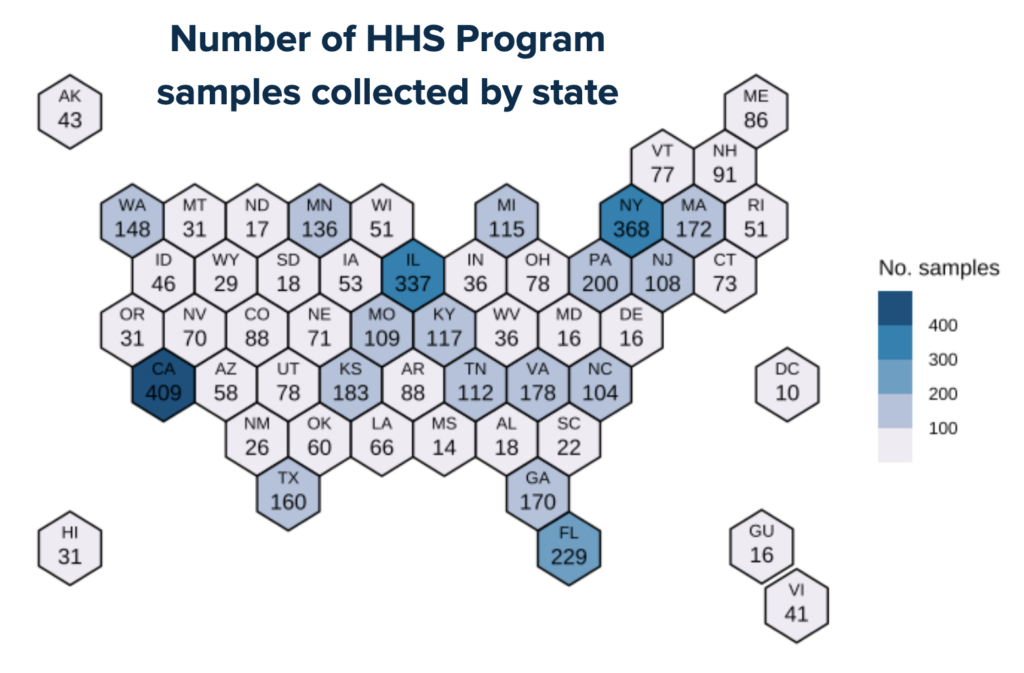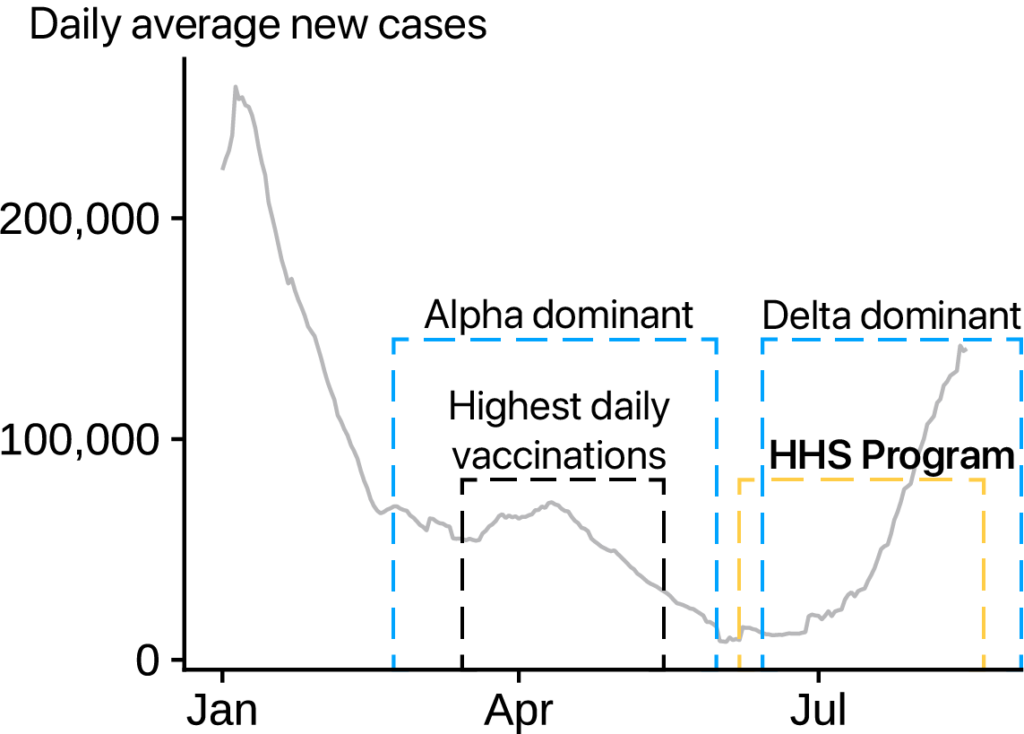
Blog
A Review of Biobot’s Successful Partnership with HHS and CDC

August 21, 2021
Nationwide wastewater monitoring program helped HHS and CDC track new phase of the COVID-19 pandemic
Today marks the final day of Phase 2 of the HHS/CDC National Wastewater Monitoring Program. Over the last 12 weeks, we have processed more than 4,800 wastewater samples from 318 wastewater treatment facilities in all 50 states, the District of Columbia, 2 US Territories, and 7 Tribal Territories, as shown in the figure below. These facilities collectively represent over 90 million people, or 27% of the US population.

To achieve this, we set out in May 2021 to rapidly onboard these new wastewater treatment facilities into the Biobot system. Over the course of a few weeks, our team spoke with wastewater treatment plant directors, public health officials, and public works departments across the country to enroll as many participants as possible.
Biobot testing has tracked changing pandemic conditions
When we started this partnership with HHS in May, the US vaccination campaign was well under way and COVID-19 appeared to be in retreat. We received many questions about the usefulness of testing in the face of decreasing case rates. Yet periods of low levels of disease are some of the most useful times for passive monitoring techniques like wastewater-based epidemiology. The advantage of passive wastewater monitoring is that it has the ability to detect the resurgence of disease. Indeed, with the emergence of the Delta Variant in July, our wastewater monitoring proved to be an essential tool for localities to track the spread of the virus and served as an early warning indicator just as cases were beginning to tick up.
As depicted in the figure below, the Delta variant is now the dominant strain in the United States. It is 50% more contagious than the Alpha variant, which is in turn 50% more contagious than the original Wuhan strain. It is in this context that the national wastewater monitoring program proved its value: as cases were about to rise, HHS and CDC were passively monitoring wastewater from hundreds of sites across the country and were able to spot the increasing prevalence of COVID-19.

Wastewater monitoring may play a larger role in the pandemic’s next phase
Even as the spread of the Delta variant has caused cases to rise, multiple states have scaled back the number of days on which they report case counts. Many states now report case counts only once a week. Some states have stopped reporting cases at the county level entirely. Less frequent and less complete case counting makes it harder to observe the current state of the pandemic, let alone identify trends in disease activity and know how to respond.
The Delta wave could also mean that the current testing capacity might not be enough to accurately measure the spread of disease. The number of states with a positivity rate greater than 5% — the World Health Organization’s recommended upper limit — has risen from almost none in June to more than 40 now.
Wastewater monitoring complements traditional case-based surveillance, both at times of low-levels of disease, as at the beginning of this program, as well as during high levels of disease spread. In this next phase of the pandemic, as clinical data becomes less prevalent, wastewater data must play a larger role in disease monitoring.





